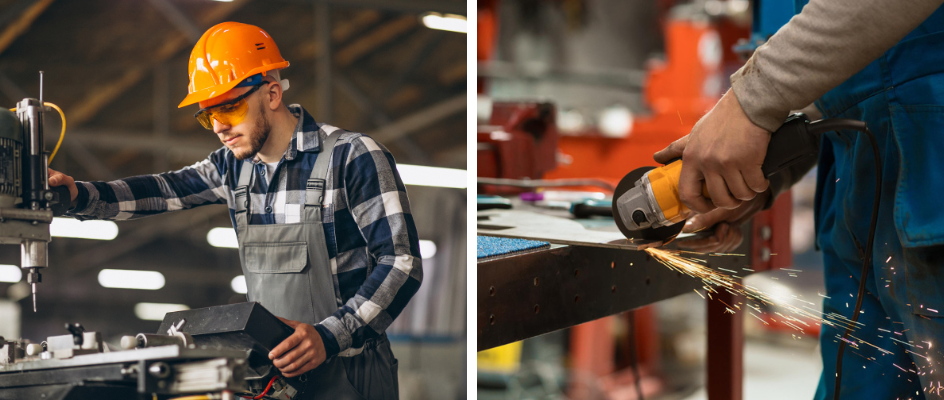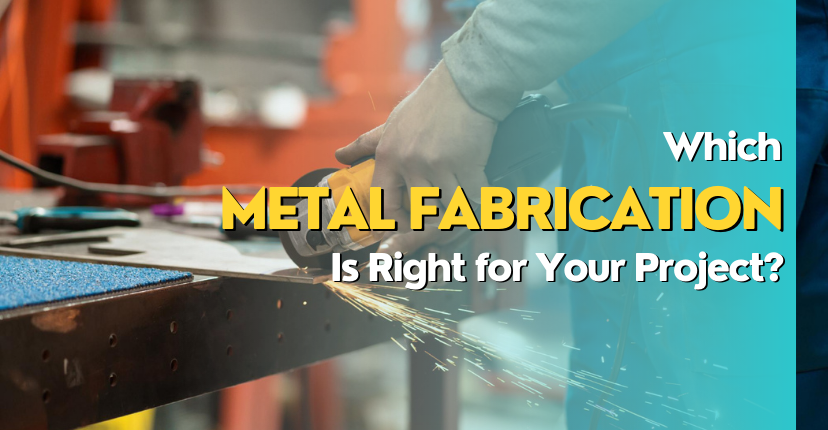Metal fabrication is an essential process in the manufacturing of everyday tools and objects that we rely on in our daily lives. It encompasses various techniques that are crucial for creating items like screws, furniture, cars, and even our breakfast toasters. Understanding the different methods of metal fabrication is key to choosing the right approach for your specific project. By selecting the appropriate fabrication technique, you can ensure the successful production of items that keep our homes and businesses running smoothly.
Understanding Metal Fabrication Techniques
Welcome to the world of metal fabrication, where we will explore the possibilities of custom metal sheet products for your project. In Wollongong, metal fabricators like Ironbark Metal Design utilize a range of techniques to transform and shape metal sheets into finished products. Let’s take a closer look at these processes using simpler terms:
Metal fabrication primarily involves the manufacturing of products using sheet metal. It begins with thin metal sheets, typically less than a quarter of an inch thick. These sheets possess flexibility, making them easily adaptable to various shapes and forms.
During the metal fabrication process, you may come across unfamiliar terminologies related to working with metal. Metal fabricators employ different techniques to cut, fold, and shape the metal sheets based on the specific requirements of your project. Moreover, they have the expertise to create custom parts by combining different metal fabrication processes to achieve the desired outcome.
Metal fabricators employ various essential techniques to manipulate and shape custom metal sheets. Here are some key techniques they utilize:
- Cutting: Cutting is a crucial process for accurately shaping custom metal sheets. Metal fabricators employ techniques such as laser cutting, sawing, shearing, or waterjet cutting to achieve precise cuts.
- Casting: Casting involves pouring molten metal into a die or mold to create products or parts with specific shapes.
- Punching: The punching technique is used to create holes in the metal, which is beneficial for parts requiring fastening or latching.
- Stamping: Stamping is a technique that forms shapes or imprints letters on a metal sheet or panel, creating distinctive designs or markings.
- Folding: Folding is a complex process that involves bending or shaping the metal into specific angles, often at 90 degrees. This technique is used to create intricate forms and structures.
- Welding: Welding is a widely employed technique in metal manufacturing, where metal fabricators join two or more metal parts, such as sheets, bars, or panels, using heat and pressure to create a strong bond.
Metal fabricators are highly skilled craftsmen who have been trained to accurately cut and work with metal, ensuring precise and desired results. If you are looking to explore the capabilities of a skilled team, consider Ironbark Metal Design and discover what they can offer for your project.
Different Types of Metal Manufacturing
Metal manufacturing is categorised into three main types:
- Industrial
- Commercial
- Structural
Industrial Metal Fabrication
Industrial metal fabrication plays a vital role in the production of parts and components for industrial equipment and tools. These tools are essential in the manufacturing of consumer goods. In the realm of modern-day manufacturing, industrial metal fabrication is of utmost importance as it provides the necessary metal parts for machinery and heavy equipment. By leveraging industrial metal fabrication processes, manufacturers can ensure the efficient and reliable production of a wide range of consumer goods.
Commercial Metal Fabrication
Commercial metal manufacturing focuses on manufacturing products used in commercial properties such as malls, stores, parks, restaurants, hotels etc. This category often includes decorative or ornamental metalwork, enhancing commercial buildings’ aesthetic appeal.
Structural Metal Fabrication
Structural metal fabrication caters to the construction and building industry. Metal fabricators specialising in structural work create components for completing shops, high-rise buildings, and even residential houses. These projects demand high-strength structural metals like steel, which form the foundational structures of buildings.

The Metal Fabrication Process
Metal manufacturing projects, whether industrial, structural, or commercial, typically undergo several processes from design to finish. Even seemingly simple products can require multiple steps beyond cutting and shaping. The following steps are commonly followed in most metal fabrication projects:
Design
During the design phase, project requirements are carefully analysed and refined. Custom metal sheet work or projects often involve working with design prototypes and renderings. Modern metal fabricators utilise programs like AutoCAD or DesignEdge to assist in designing and developing prototypes.
Prototyping
Prototyping is crucial in custom projects, ensuring the product functions as intended before large-scale production. Rapid sheet metal prototyping or 3D printing is employed to create prototypes tested to assess their functionality. Based on the results, the skilled professional can adjust the design.
Programming
Next, programming is involved in projects using computer-controlled machines in metal fabrication. Automated cutting, punching, and turning machines require programming to carry out their operations.
Fabrication
After the design is finalised and programming is completed, fabrication work begins. This phase involves various metal fabrication processes, including cutting, punching, folding, welding, and machining.
Finishing
Finishing encompasses the refinement of surfaces and edges or the application of coatings like powder coating. All projects may not require finishing, and it will depend on the product’s intended use.
Assembly
Assembly involves the final steps of a project, which may include welding or integrating electrical components to complete the product.
Types of Metals Used in Fabrication
Metal fabricators utilise a variety of metals for metal fabrication and metal parts manufacturing. The process involves working with different metals and their alloys; sheet metals are the most used.
The main types of metals used in metal fabrication include:
- Aluminium
- Stainless steel
- Copper
- Iron
Although any metal can go through a fabrication process, the suitability of a particular metal for a project depends on factors such as its thickness, flexibility, and softness. For instance, aluminium is more flexible than steel, so each one will have different sheet metal fabrication techniques.
Final Words
Ironbark Metal Design is a reputable and experienced provider of metal fabrication services. With over ten years of expertise in the field, we specialize in delivering high-quality metal manufacturing solutions across various sectors. If you have innovative ideas that you wish to transform into reality using metal, look no further than Ironbark Metal Design. Our dedicated team is committed to bringing your ideas to life through expert metal fabrication services. Contact us today to embark on your metal fabrication journey and witness your concepts take shape with precision and craftsmanship.







